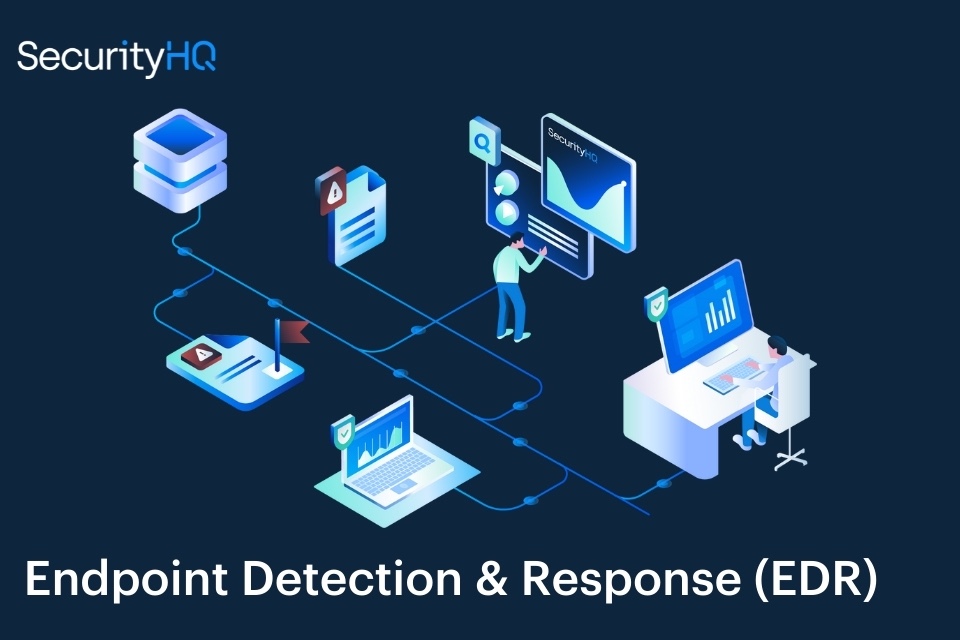By Eleanor Barlow, Content Manager, SecurityHQ
An endpoint, in its simplest form, is any device that can be connected to a given network, including, and not limited to laptops, computers, mobiles, servers, IoT devices, switches, cameras, digital printers, smart watches, and more. What constitutes as an endpoint is growing by the day. Be it in the form of health trackers or navigation systems, with any advancement in technology, the number of endpoints and, with it, the number of vulnerabilities grows.
What is Endpoint Detection & Response and How is it Used?
Endpoint Detection & Response (EDR) is a service usually provided by a Managed Security Services Provider (MSSP) that is used to continually monitor endpoints, gain full visibility of the clients IT environment, detect incidents, receive instant notifications and advice on how to contain and mitigate a threat and stop breaches
The challenge most organisations have within their security teams is that responses to cyber attacks are simply not fast enough. This is primarily due to the fact that organisations do not often have the right processes, systems, experts in place who can monitor, action and respond to threats effectively and in rapid time.
EDR is designed to speed up this response time by identifying the root cause of a threat and make blind spots instantly visible. With this visibility of their threat landscape, businesses can then understand and prioritise threats, as well as respond to what needs to be responded to first.
How Does EDR Work?
EDR can be used to monitor all potential threats and behaviours, through this, security teams can understand how a threat appeared, what created it, if it made a connection, if the registry setting was modified, what effects this had, and more.
As this service is usually ran by a dedicated team, 24/7 SOC monitoring means that attacks already in progress are contained, and the infected systems are then isolated. The system processes are then terminated, and the hashes banned across the entire enterprise to ensure effective containment of a threat
Real-time response means that you can proactively locate the most advanced threats, that make it past your usual defences. This is often achieved by a combination of ML and human intelligence, to identify anomalous endpoint behaviour.
What Next?
To find out more on how to gain full visibility of your whole IT environment, detect incidents, and stop breaches, download this EDR data sheet here, for a comprehensive view of the features and benefits available.
Or, if you are experiencing a current security breach or possible incident and require immediate assistance, please complete this form and a member of our Security Operations Team will aim to be in contact within 15 minute.
About The Author
Based in London, Eleanor specialises in researching and reporting on the latest in cyber security intelligence, developing trends and security insights. As a skilled Content Manager and experienced named author and ghost writer, she is responsible for SecurityHQ’s content strategy. This includes generating content for the latest articles, press releases, whitepapers, case studies, website copy, socials, newsletters, threat intelligence and more. Eleanor holds a first-class degree in English Literature, and an MA from the University of Bristol. She has strong experience writing in B2B environments, as well as for wider technology-based research projects.





